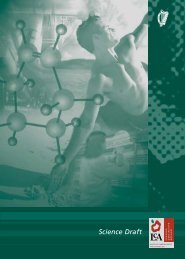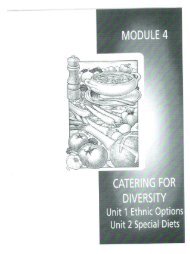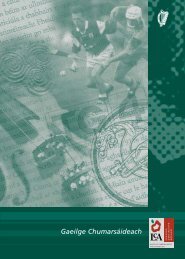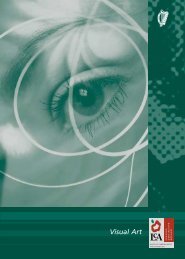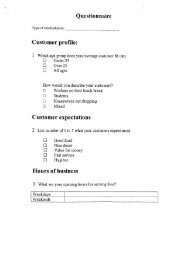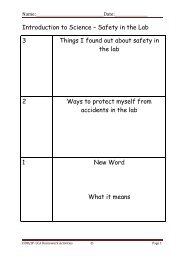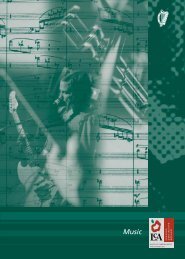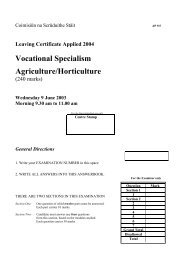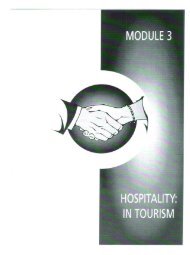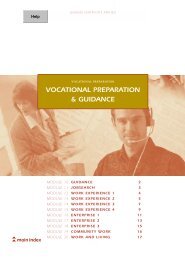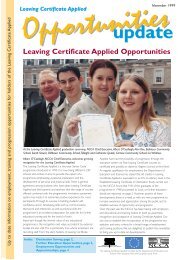Religious Education Draft - PDST
Religious Education Draft - PDST
Religious Education Draft - PDST
Create successful ePaper yourself
Turn your PDF publications into a flip-book with our unique Google optimized e-Paper software.
RELIGIOUS EDUCATION • LOOKING IN • IMAGES OF GOD<br />
Unit 3: Images of God<br />
LEARNING OUTCOMES<br />
TEACHER GUIDELINES<br />
The student will be able to:<br />
1. identify their present image of<br />
God and compare it with possible<br />
childhood images<br />
Students can be given time to draw<br />
or write "My image of God " –<br />
they could revisit their Faith Line and<br />
identify images they had as children.<br />
2. compare and contrast the images of<br />
God found in ancient religions,<br />
world religions and modern culture<br />
Examine the images of God found in<br />
(a) Ancient religions.<br />
(b)World religions, exploration of the<br />
images of God found in Christianity,<br />
Islam, Buddhism, Hinduism, and<br />
Judaism. This can be done through<br />
group project work.<br />
(c) The modern world. This can be<br />
achieved through the use of video,<br />
newspapers, film, exploration of<br />
their own experience, Sacred Text,<br />
stories, interviews with<br />
adults/teenagers/children.<br />
3. discuss the effects of these images<br />
on growth in faith<br />
Prepare a collage of all the different<br />
images (in groups or as a class).<br />
Examine the images and how they affect<br />
growth in faith.<br />
4. say which image they are most<br />
comfortable with and why<br />
or<br />
5. give reasons why they have no<br />
image of God<br />
Students should now select an image<br />
of God which has particular appeal<br />
for them. They should be able to<br />
justify their choice.<br />
14



